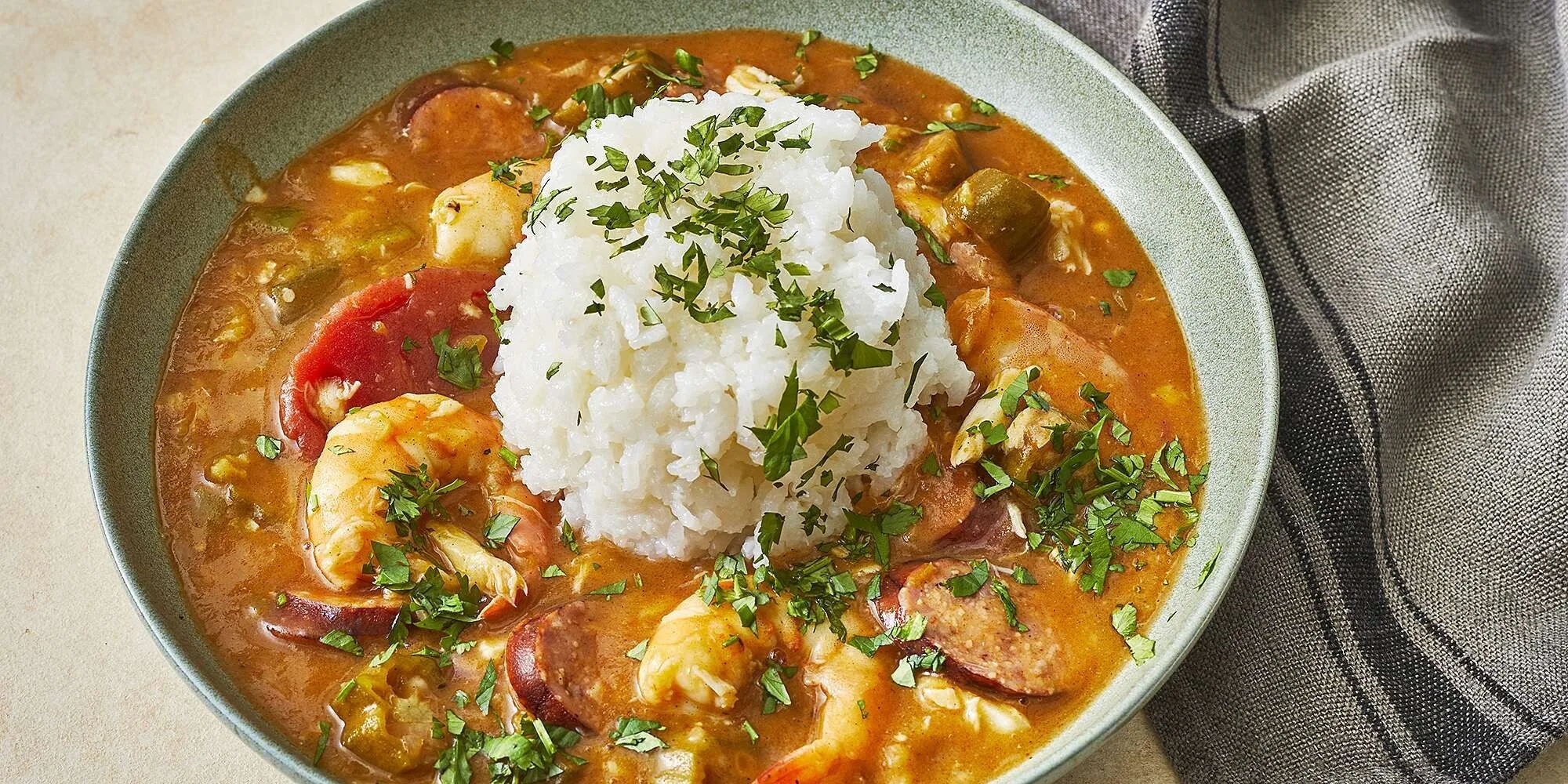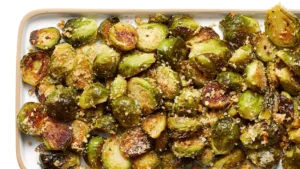A Culinary Adventure in the Big Easy: Mastering New Orleans Creole Gumbo
New Orleans, a city pulsating with vibrant music, rich history, and a unique culinary scene, boasts a signature dish that captures its essence – Creole Gumbo. This hearty stew, brimming with bold flavors and textures, is a symphony for the senses. Imagine a rich roux base cradling succulent shrimp, tender chicken, and colorful vegetables, all simmered to perfection. Gumbo is not just a meal; it’s a cultural experience, perfect for family dinners, potlucks, or impressing guests with your culinary prowess.
Why You’ll Love New Orleans Creole Gumbo:
- A Celebration of Flavor: Creole Gumbo is an explosion of textures and tastes, with a perfect balance of savory, spicy, and slightly sweet notes.
- Family-Friendly Feast: This hearty and satisfying stew is a crowd-pleaser, sure to be enjoyed by adults and children alike.
- Adaptable and Customizable: Feel free to personalize the recipe with different protein options, vegetables, and spice levels to suit your preferences.
- Celebration-Worthy Centerpiece: Gumbo’s vibrant colors and rich aroma make it a showstopping dish, perfect for special occasions and gatherings.
- Rich Culinary Heritage: Creole Gumbo embodies the city’s unique blend of French, African, and Caribbean influences, offering a taste of New Orleans history.
Understanding the Gumbo Universe:
Before diving into the recipe, let’s explore the two main Gumbo variations:
- Creole Gumbo: This version, the focus of our recipe, typically features a lighter roux (cooked flour and fat), seafood like shrimp and oysters, and tomatoes.
- Cajun Gumbo: Hailing from the rural regions of Louisiana, Cajun Gumbo often uses a darker roux, incorporates more meats like chicken and sausage, and relies on a filé powder (sassafras) thickener instead of a roux in some variations.
The Ingredients You’ll Need (Serves 6-8 People):
For the Roux:
- 1 cup all-purpose flour
- ½ cup vegetable oil
- ½ cup canola oil (or all vegetable oil)
For the Gumbo:
- 1 pound boneless, skinless chicken thighs, cut into bite-sized pieces
- ½ pound andouille sausage, sliced
- 1 large green bell pepper, chopped
- 1 large onion, chopped
- 3 celery stalks, chopped
- 4 cloves garlic, minced
- 1 (14.5 oz) can diced tomatoes, undrained
- 4 cups chicken broth
- 2 cups water
- 1 tablespoon dried thyme
- 1 teaspoon dried oregano
- 1 bay leaf
- 1 teaspoon cayenne pepper (adjust to your spice preference)
- 1 pound medium shrimp, peeled and deveined (optional)
- 1 cup chopped fresh parsley
- Salt and freshly ground black pepper to taste
- Cooked white rice, for serving
Optional Ingredients:
- 1 cup okra, sliced (cut on the diagonal for reduced sliminess)
- File powder (optional thickening agent – follow package instructions)
- Hot sauce (like Tabasco) to taste
Step-by-Step Guide to Making New Orleans Creole Gumbo:
1. Crafting the Roux (The Foundation of Flavor):
In a large pot or Dutch oven, heat the vegetable oil and canola oil over medium heat. Whisk in the flour and cook, stirring constantly, for 8-10 minutes. The roux will gradually change color, starting from a pale yellow to a golden brown. Be patient and avoid letting the roux burn, as it will impart a bitter taste.
2. Building the Base:
Once the roux reaches a golden brown color, add the chopped green pepper, onion, and celery. Sauté for 5-7 minutes, or until the vegetables are softened. Stir in the minced garlic and cook for an additional minute, allowing the fragrant aroma to release.
3. Adding Depth and Flavor:
Pour in the diced tomatoes with their juices. Season with the dried thyme, oregano, bay leaf, cayenne pepper, and salt to taste. Bring to a simmer and cook for 5 minutes, allowing the flavors to meld.
4. Simmering to Perfection:
Add the chicken broth, water, and (optional) sliced okra. Bring to a boil, then reduce heat and simmer for 20-25 minutes, or until the chicken is cooked through and the okra is tender.
5. Protein Powerhouse:
Stir in the sliced andouille sausage and simmer for an additional 5 minutes. If using shrimp, add them during the last 2-3 minutes of cooking
6. The Grand Finale:
Once the shrimp are cooked through (opaque and slightly pink), remove the bay leaf. Taste and adjust seasonings with salt, black pepper, and additional cayenne pepper if desired. For a touch of brightness, stir in the chopped fresh parsley.
7. Serving Up a Taste of New Orleans:
Ladle the steaming hot gumbo into bowls over a bed of cooked white rice. Traditionally, gumbo is served with a side of hot sauce like Tabasco, allowing diners to adjust the spice level to their preference.
Tips for Gumbo Success:
- Roux Perfection: The roux is the heart of the gumbo, so take your time and don’t let it burn. A golden brown color is ideal.
- The Power of Vegetables: Feel free to experiment with different vegetables like chopped okra, green beans, or corn.
- Protein Play: While chicken and shrimp are classic choices, you can explore variations with other protein options like crawfish, crab, or even plant-based alternatives.
- Spice it Up (or Down): Adjust the amount of cayenne pepper to your desired spice level. Start with less and add more to taste.
- Leftovers Delight: Gumbo tastes even better the next day as the flavors continue to develop. Store leftovers in an airtight container in the refrigerator for up to 3 days. Reheat gently on the stovetop, adding a splash of water or broth if needed to maintain the desired consistency.
- Gumbo for Everyone: This recipe is easily adaptable for dietary needs. For a gluten-free version, use certified gluten-free flour for the roux. To make it vegetarian, omit the seafood and sausage and consider adding a plant-based protein source like tofu or lentils.
Beyond the Bowl: The Cultural Significance of Gumbo:
Gumbo is more than just a delicious dish; it’s a symbol of New Orleans’ vibrant cultural tapestry. Here’s a glimpse into the history that simmers within each pot:
- A Melting Pot of Influences: Creole Gumbo reflects the city’s unique blend of French, African, and Caribbean influences. The roux technique is rooted in French cuisine, while the use of okra and filé powder (optional) are of African origin. Tomatoes, a key ingredient, were brought by the Spanish.
- A Celebration of Community: Gumbo is often served at community gatherings and celebrations, fostering a sense of togetherness and shared heritage.
- A Culinary Canvas for Creativity: With its versatility, gumbo allows cooks to express their creativity by adding personal touches and regional variations.
Conclusion:
With this comprehensive guide and recipe, you’re now equipped to create a pot of authentic New Orleans Creole Gumbo that will tantalize taste buds and transport you to the heart of the Big Easy. Gather your ingredients, unleash your culinary spirit, and embark on a delicious journey filled with the vibrant flavors and rich history of New Orleans.





